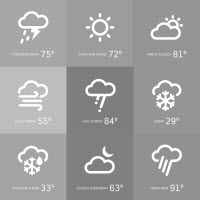SACRAMENTO – The Sierra Nevada snowpack continues to build during one of the wettest winters in California’s recorded history. Today’s manual snow survey by the Department of Water Resources (DWR) at Phillips Station in the Sierra Nevada found a snow water equivalent (SWE) of 43.4 inches. February’s Phillips survey found 28.0 inches of SWE, and January’s reading was 6.0 inches. The March 1 average at Phillips is 24.3 inches.
SWE is the depth of water that theoretically would result if the entire snowpack melted instantaneously. That measurement is more important than depth in evaluating the status of the snowpack. On average, the snowpack supplies about 30 percent of California’s water needs as it melts in the spring and early summer.
More telling than a survey at a single location are DWR’s electronic readings from 98 stations scattered throughout the Sierra Nevada. Statewide, the snowpack today holds 45.5 inches of SWE, or 185 percent of the March 1 average (24.6 inches). On January 1 before a series of January storms, the SWE of the statewide snowpack was 6.5 inches, just 64 percent of the New Year’s Day average. On February 1, the statewide SWE was 30.5 inches, 174 percent of average for that date.
Measurements indicate the water content of the northern Sierra snowpack is 39.2 inches, 159 percent of the multi-decade March 1 average. The central and southern Sierra readings are 49.0 inches (191 percent of average) and 46.4 inches (201 percent of average) respectively.
State Climatologist Michael Anderson said the winter season has been “historic,” especially in the central and southern Sierra where elevations are higher and where snowfall has been near the 1983 record amount.
The Phillips snow course, near the intersection of Highway 50 and Sierra-at-Tahoe Road, is one of hundreds surveyed manually throughout the winter. Manual measurements augment the electronic readings from about 100 sensors in the state’s mountains that provide a current snapshot of the water content in the snowpack.
Frank Gehrke, chief of the California Cooperative Snow Surveys Program, conducted today’s survey at Phillips and said of his findings, “It’s not the record, the record being 56.4 (inches), but still a pretty phenomenal snowpack…. January and February came in with some really quite phenomenal atmospheric river storms, many of which were cold enough to really boost the snowpack.”
Gehrke said the central and southern regions in the Sierra Nevada are tracking close to 1983, which had the maximum recorded snowpack statewide. “Most of the snow courses are well over their April 1 accumulations, which at (Phillips) is 25 inches,” Gehrke said, “so we’ve busted through April 1 values pretty much at all snow courses throughout the state.”
Water Year 2017’s heavy precipitation is particularly remarkable because of the five dry years that preceded it. Since October 1, the Northern California, San Joaquin and Tulare Basin indices’ rainfall totals are, respectively, 76.5 inches (average is 34.7), 60.7 inches (average is 27.4) and 41.0 inches (average is 19.4). Collectively, the three regions had a total of 178.2 inches of rainfall, or 218 percent of the five-month average (81.5 inches).
Many Californians continue to experience the effects of drought, and some Central Valley communities still depend on water tanks and bottled water. Groundwater – the source of at least a third of the supplies Californians use – will take much more than even an historically wet water year to be replenished in many areas.
California’s climate is the most variable of any state. Historically, it swings from drought to flood and back to drought. In addition, as global warming drives up average temperatures in California, more precipitation will fall as rain, not as snow stored in the Sierra Nevada and other mountains. To help prepare for these ever-wider extremes, Californians can learn ways to save water every day by visiting SaveOurWater.com.
Electronic snowpack readings are available at the California Data Exchange Center’s (CDEC) Snow Water Equivalents webpage, For earlier readings, click the calendar icon below the map, select a date, then Refresh Data.
Water Year 2017’s precipitation can be found at CDEC’s Precipitation page. Look in the right-hand column for the Northern Sierra 8-station index for updated rainfall readings in the critical northern portion of the state, as well as the San Joaquin 5-station and Tulare Basin 6-station links.
For a broader snapshot of current and historical weather conditions, see DWR’s Water Conditions and Drought pages.
– 30 –
